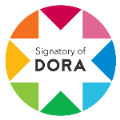Flipped classroom in the development of the communicative skills at “Emiliano Hinostroza High School”
DOI:
https://doi.org/10.35381/racji.v7i1.1703Palabras clave:
Electronic learning, language of instruction, group communication. (UNESCO Thesaurus).Resumen
The implementation of interactive strategies to develop oral skills and consolidate a model to improve English as a foreign language is lacking in rural schools. The main purpose of this research is to explore the effectiveness of the flipped classroom in the development of oral expression in 1st and 2nd year high school students of the rural school "Emilio Hinostroza" and to determine the likes and dislikes of the students for the activities, resources and results of the flipped classroom. For this purpose, a questionnaire with closed and open-ended questions was used to determine the students' perceptions. The findings of the study provide information on some benefits with respect to student motivation and performance, and make the flipped classroom model a tool worthy of consideration for teaching English synchronously and asynchronously.
Descargas
Citas
Abdullah, M. Y., Hussin, S., & Ismail, K. (2019). Implementation of Flipped Classroom Model and Its Effectiveness on English Speaking Performance. International Journal of Emerging Technologies in Learning (iJET), 14(9) 130-149. Doi: https://doi.org/10.3991/IJET.V14I09.10348
Alhamami, M., & Khan, M. R. (2019). Effectiveness of flipped language learning classrooms and students’ perspectives. Journal on English as a Foreign Language, 9(1), 71-86. https://doi.org/10.23971/jefl.v9i1.1046
Andy. (2021, March 18). Flipped Learning in Remote or Hybrid Education [Blog post]. Retrieved from https://n9.cl/38ud2
Elkhatat, A. M., & Al-Muhtaseb, S. A. (2021). Hybrid online-flipped learning pedagogy for teaching laboratory courses to mitigate the pandemic COVID-19 confinement and enable effective sustainable delivery: investigation of attaining course learning outcome. SN Social Sciences, (5), 113. https://doi.org/10.1007/s43545-021-00117-6
Erbil, D. G. (2020). A Review of Flipped Classroom and Cooperative Learning Method Within the Context of Vygotsky Theory. Frontiers in Psychology, 11, 1157. https://doi.org/10.3389/fpsyg.2020.01157
Flipped Learning Network (FLN). (2014) The Four Pillars of F-L-I-P. Retrieved from https://n9.cl/im45
Gilboy, M. B., Heinerichs, S., & Pazzaglia, G. (2015). Enhancing Student Engagement Using the Flipped Classroom. Journal of Nutrition Education and Behavior, 47(1), 109–114. Doi: https://doi.org/10.1016/j.jneb.2014.08.008
Hernández Suqui, S. I. (2021-12-21). In-class oral presentations and video blogging: effects on EFL learners’ speaking skill (Bachelor's thesis). Retrieved from http://dspace.ucuenca.edu.ec/handle/123456789/37673
Kevin. (2012, April 13). Flipping the Classroom Requires More Than Video [Blog post]. Retrieved from https://www.wired.com/2012/04/flipping-the-classroom/
Lage, M. J., Platt, G. J., & Treglia, M. (2000). Inverting the Classroom: A Gateway to Creating an Inclusive Learning Environment. The Journal of Economic Education, 31(1), 30–43. Doi: https://doi.org/10.1080/00220480009596759
Lo, C. K., & Hew, K. F. (2017). A critical review of flipped classroom challenges in K-12 education: possible solutions and recommendations for future research. Research and Practice in Technology Enhanced Learning, 12 (1). https://doi.org/10.1186/s41039-016-0044-2
Ministerio de Educaciòn del Ecuador. (2021). Transformaciones educativas en Ecuador. Retrieved from https://n9.cl/yq7gq
Morton, D. A., & Colbert-Getz, J. M. (2016). Measuring the impact of the flipped anatomy classroom: The importance of categorizing an assessment by Bloom's taxonomy. Anatomical Sciences Education, 10(2), 170–175. https://doi.org/10.1002/ASE.1635
Ngo, H. K., & Md Yunus, M. (2021). Flipped Classroom in English Language Teaching and Learning: A Systematic Literature Review. International Journal of Academic Research in Business and Social Sciences, 11(3). https://doi.org/10.6007/IJARBSS/v11-i3/8622
Nunan, D. (1991). Language teaching methodology: A textbook for teachers. New York: Prentice-Hall.
Ortega Auquilla, D. P., & Auccahuallpa, R. & Martínez, O. (2017). La Educación Ecuatoriana en Inglés: Nivel de Dominio y Competencias Lingüísticas de los Estudiantes Rurales. Revista Scientific, 2(6) 52-73. https://doi.org/10.29394/scientific.issn.2542-2987.2017.2.6.3.52-73
Oviedo Guado, N. G., & Mena Mayorga, J. I. (2021). Communicative language teaching approach in the development of speaking skills. Ciencia Digital, 5(4), 6-26. https://doi.org/10.33262/cienciadigital.v5i4.1865
Oviedo, H, & Campo-Arias, A. (2005). Aproximación al uso del coeficiente alfa de Cronbach. [An Approach to the Use of Cronbach's Alfa]. Revista Colombiana de Psiquiatría, 34(4), 572-580.
Prince, M. (2004). Does Active Learning Work? A Review of the Research. Journal of Engineering Education, 93(3), 223–231. https://doi.org/10.1002/j.2168-9830.2004.tb00809.x
Pudin, C. S. J. (2017). Exploring a Flipped Learning Approach in Teaching Grammar for ESL Students. IJELTAL (Indonesian Journal of English Language Teaching and Applied Linguistics) (1), 51-54. https://doi.org/10.21093/ijeltal.v2i1.47
Rao, S. (2019). The Importance of Speaking Skills in English Classrooms. Alford Council of International English & Literature Journal(ACIELJ), 2(2), 1-12.
Recino Pineda, U., Elizabeth Minchala, O., & Ortega Auquilla, D. (2018). Using the flipped classroom to teach educational models in English at the education national university (UNAE) of Ecuador. Speech, Language and Hearing, 21(2), 94–97. https://doi.org/10.1080/2050571X.2017.1369068
Santhanasamy, C., & Md, M. (2022). A Systematic Review of Flipped Learning Approach in Improving Speaking Skills. European Journal of Educational Research, 11(1), 127–139. https://doi.org/10.12973/eu-jer.11.1.127
Singh, C. K. S., Singh, H. S. S. J., Singh, T. S. M., Ja’afar, H., Abdullah, M. S., Mostafa, N. A., & Zamri, M. L. (2018). Flipped classroom approach for improving speaking skills of TVET trainees. International Journal of Applied Linguistics and English Literature, 7(7), 27-39. https://doi.org/10.7575/aiac.ijalel.v.7n.7p.40
Sohaya, E. M., Situmorang, J., & Tambunan, H. (2021). The Flipped Classroom: Learning Revolution to improve students’ English speaking skills. In 6th Annual International Seminar on Transformative Education and Educational Leadership. 91-96. Retrieved from https://n9.cl/dw4jc
Sӧnmez, N. (2020). Using flipped classroom model for developing speaking skills: An integrative review research. Innovational Research in ELT, 1, 10-20. Doi: 10.29329/irelt.2020.311.2
Talbert, R., & Bergmann, J. (2017). Flipped learning: A guide for higher education faculty.
UNICEF. (2021). Priorizar la educación para todos los niños y niñas es el camino a la recuperación [Prioritizing education for all children is the road to recovery]. Retrieved from https://n9.cl/hsvky
Publicado
Cómo citar
Número
Sección
Licencia
CC BY-NC-SA : Esta licencia permite a los reutilizadores distribuir, remezclar, adaptar y construir sobre el material en cualquier medio o formato solo con fines no comerciales, y solo siempre y cuando se dé la atribución al creador. Si remezcla, adapta o construye sobre el material, debe licenciar el material modificado bajo términos idénticos.
OAI-PMH URL: https://fundacionkoinonia.com.ve/ojs/index.php/Iustitia_Socialis/oai










